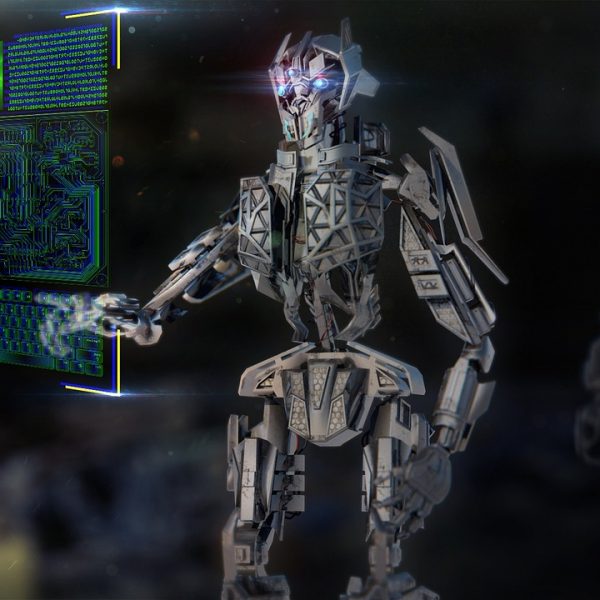Pizza remains one of the most popular and craved foods across the globe. In 2022, the behind-the-scenes process of pizza preparation may be radically changed by increasing automation. Several companies are developing and launching AI-powered robotic systems capable of automating pizza making. With impressive technological capabilities and strong demand, 2022 is set to be a landmark year for pizza robots going mainstream.
The pizza industry is valued at over $145 billion annually worldwide. Pizza chains sell millions of pies per day. However, making all these pizzas involves intensive manual labor. Employees must roll dough, add sauce and ingredients, monitor ovens, and package finished pies. Amid labor shortages and high turnover, automating parts of this process is appealing. Robots can work 24/7 without sick days, perform consistently, and lower labor costs.
Enter the pizza-making robot.Companies like Picnic, Yo-Kai Express, and PaZZta have engineered automated pizza kitchens. These systems use specialized robotic arms, custom ovens, conveyor belts, and AI software to assemble and cook pizzas. Sensors monitor dough spreading, sauce dispersion, and cheese coverage to ensure quality. The robots can make hundreds of customized pies per hour without human intervention.
Picnic’s system even cleans itself using AI vision to detect spills and dirt. The simplicity benefits restaurants and pizza chains. Workers load ingredients and push a button. This frees up staff for customer service tasks versus manual pizza prep. The robots also allow more pizzas to be made faster at peak hours.
Several pizza chains have begun adopting these automated systems. Pizza Hut is piloting Picnic robots in select locations. The pizza giant Domino’s plans to roll out Pizzaforall’s pizza robots to make and bake pies across stores. Regional chains like Mountain Mike’s and Marco’s are also integrating robotic kitchens. As more brands incorporate the tech and realize benefits, widespread pizza robot adoption is imminent.
The advances propelling pizza-making robots stem from the maturing artificial intelligence and machine learning fields. Computer vision has progressed enormously, enabling machines to “see” and interpret environments. Robotic arms are also becoming more dexterous through motor learning algorithms. Combined with cloud systems and neural networks, modern automation can replicate human activities with precision and flexibility.
Pizza is an ideal food preparation process for robots to take over. Rolling consistent dough, applying sauce methodically, and spreading cheese uniformly are tasks tailored for automation. The structured sequence of pizza construction can be coded into AI systems. Capturing data on thousands of pies lets the robots train to improve. The limited workspace of pizza ovens and conveyors is also a more controlled environment than a bustling restaurant kitchen.
For pizza customers, the robots provide benefits through enhanced consistency. Pies will be constructed identically each time. You can expect equal sauce and topping distribution with every order. This helps brands deliver a reliable product. And specialized oven-tracking algorithms will cook the pizzas perfectly without overdone or undercooked spots.
Pizza makers can also customize recipes more through robots. Switching dough hydration levels, sauces, or cheese types for new creations is simpler. The automated systems make changing up pies and specials much faster than human workers hand-crafting each pizza. Expanding menus and options keeps customers happy.
Despite their benefits, pizza robots do have limitations currently. Most systems can only produce basic pizza types like cheese and pepperoni. Handling complex toppings and gourmet pizzas will require more advances. There are also high upfront costs for installing the robotic hardware. The automation works best for high volume pizza chains versus mom and pop shops.
However, with any new technology, capabilities will grow rapidly while costs decline. Engineers are already enhancing pizza robots to handle specialty pies with additional toppings and finishes. With economies of scale, the price tag will lower as more brands adopt these systems. And AI performance continues improving exponentially thanks to accelerating algorithms and predictive analytics.
While skeptics may argue robots will never replicate the human touch, having consistently crafted pies available 24/7 provides strong incentives for adoption. The technology removes headaches operators face finding and managing pizza makers. As robots spread in 2022 across major pizza chains, it will demonstrate the systems are primed for mainstream use.
The pandemic has already accelerated automation and digitalization across the restaurant industry. Pizza robots perfectly align with this trend. They allow contactless operation and remove reliance on prep cooks. Pizza remains in high demand for delivery and takeout. Leveraging robots lets brands meet surging volumes efficiently.
Looking beyond 2022, pizza making robots lay the foundation for even greater automation in food service. Their presence in thousands of pizza kitchens will provide data to refine AI capabilities. More advanced computer vision, motor control, and cloud analytics will expand the scope of what restaurant robots can accomplish.
As the global appetite for pizza continues growing, automating this beloved food’s preparation is a logical step forward. Pizza robots crossing into the mainstream in 2022 will begin an era of consistent, customized, and readily available pies. The innovation stands to transform pizza chains and kitchens for the ultimate benefit of millions of pizza lovers worldwide.




